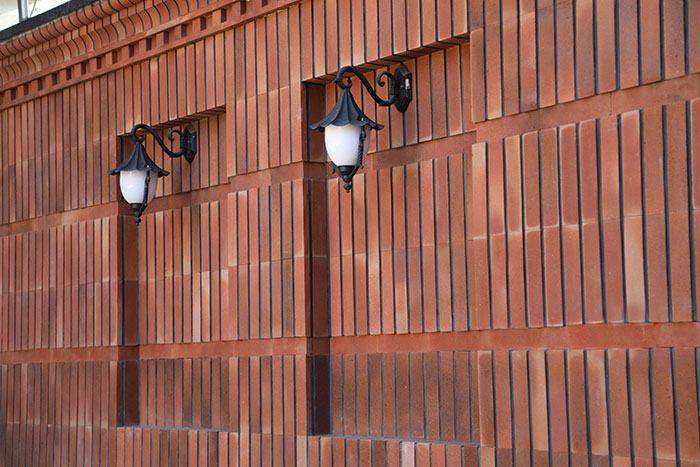Firebricks are essential in high-temperature applications, such as furnaces, kilns, and fireplaces. They are designed to withstand extreme heat, but not all firebricks are created equal. There are two main types of firebricks: natural and artificial. Each type has its own unique properties, and the choice between them depends on the specific needs of the project. In this article, we will explore the differences between natural and artificial firebricks and help you determine which is best for your application.
Natural Firebricks: Composition and Benefits
Natural firebricks are made from natural refractory materials such as fireclay, alumina, and silica. These materials are mined from the earth, processed, and then fired at high temperatures to create firebricks that can withstand intense heat. Natural firebricks are valued for their strength, thermal stability, and longevity.
- Thermal Stability One of the key benefits of natural firebricks is their excellent thermal stability. They can endure prolonged exposure to high temperatures without cracking, making them ideal for applications such as kilns, furnaces, and fireplaces. Natural firebricks are often used in environments where the temperature regularly exceeds 1,000°C, such as in metalworking or glass production.
- Durability Natural firebricks are known for their durability. They can withstand extreme conditions for extended periods without degrading. In industrial settings, natural firebricks are often chosen for their ability to last many years, even in harsh conditions. Their strength and resilience make them a cost-effective solution for long-term use in high-heat applications.
- Chemical Resistance Natural firebricks are also resistant to chemicals and corrosive substances that are often present in industrial processes. This resistance makes them suitable for use in furnaces and kilns where chemical reactions occur, such as in the production of glass or metals.
- Sustainability As natural firebricks are made from naturally occurring materials, they are often considered more environmentally friendly than synthetic alternatives. They are also recyclable, meaning that they can be repurposed after their initial use, further reducing their environmental impact.
Artificial Firebricks: Composition and Benefits
Artificial firebricks, also known as synthetic or engineered firebricks, are made from a combination of synthetic materials that mimic the properties of natural firebricks. These materials can include synthetic alumina, zirconia, and other refractory compounds. Artificial firebricks are designed to offer enhanced performance in specific applications.
- Customizable Properties One of the main advantages of artificial firebricks is that their properties can be customized based on the intended use. For example, artificial firebricks can be engineered to have higher thermal shock resistance or better insulation properties than natural firebricks. This customization allows manufacturers to tailor the firebricks to meet the exact needs of the project.
- Consistency and Uniformity Artificial firebricks are manufactured in controlled environments, which ensures that they are consistent in size, shape, and quality. This uniformity makes them easier to install and work with, especially in large-scale industrial applications where precision is important.
- Enhanced Performance In certain high-performance applications, artificial firebricks may offer superior properties compared to natural firebricks. For example, in furnaces that require extremely high temperatures, artificial firebricks made from zirconia may be able to withstand temperatures up to 2,600°C, whereas natural firebricks may not be able to endure such extreme heat.
- Lightweight Some artificial firebricks are designed to be lightweight, which can be beneficial in applications where weight is a concern. Lightweight firebricks are often used in residential applications such as fireplaces or wood-burning stoves, where ease of installation is important.
Key Differences Between Natural and Artificial Firebricks
- Material Composition: Natural firebricks are made from naturally occurring refractory materials, while artificial firebricks are made from synthetic compounds that are engineered to mimic or enhance the properties of natural firebricks.
- Thermal Properties: Both natural and artificial firebricks can withstand high temperatures, but artificial firebricks can be customized to offer higher thermal shock resistance or better insulation in specific applications.
- Durability: Natural firebricks are known for their durability and longevity, while artificial firebricks may offer enhanced performance in specific high-temperature environments, but may not always match the long-term durability of natural bricks.
- Environmental Impact: Natural firebricks are considered more environmentally friendly due to their use of naturally sourced materials. Artificial firebricks, while often more energy-efficient in use, may have a larger environmental footprint during production.
- Cost: Artificial firebricks can be more expensive than natural firebricks, especially if they are engineered with high-performance properties. Natural firebricks are generally more affordable, making them a cost-effective choice for many applications.
Conclusion
Both natural and artificial firebricks offer excellent heat resistance and durability, but the choice between the two depends on the specific requirements of your project. Natural firebricks are ideal for applications that require long-lasting durability and sustainability, while artificial firebricks are better suited for high-performance environments that require customized properties. Understanding the differences between these two types of firebricks can help you make an informed decision and ensure the success of your project.



